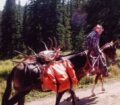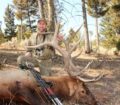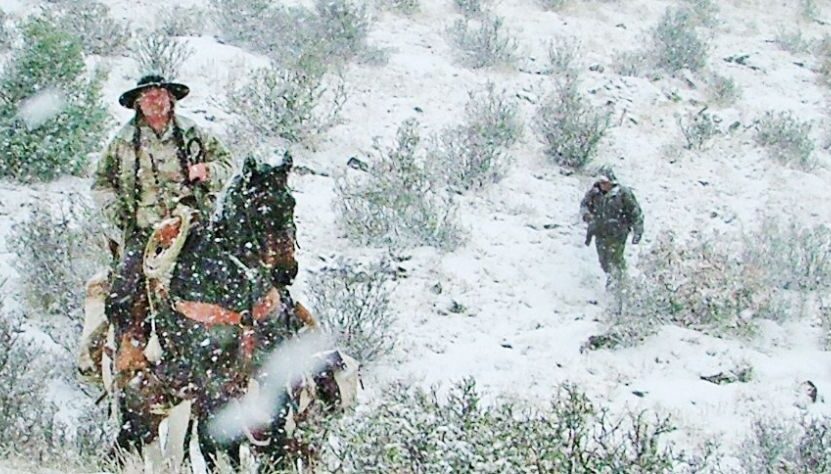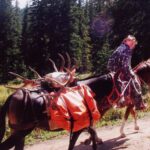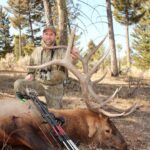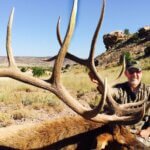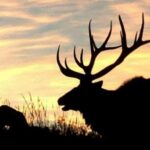Editor’s Note: Wayne Carlton of Colorado has hunted and guided for elk for about 40 years. Carlton’s known as the father of the diaphragm elk call and the creator of Camo West’s Vanish camouflage. We’ve asked Carlton to give us his 10-best secrets for hunting elk.
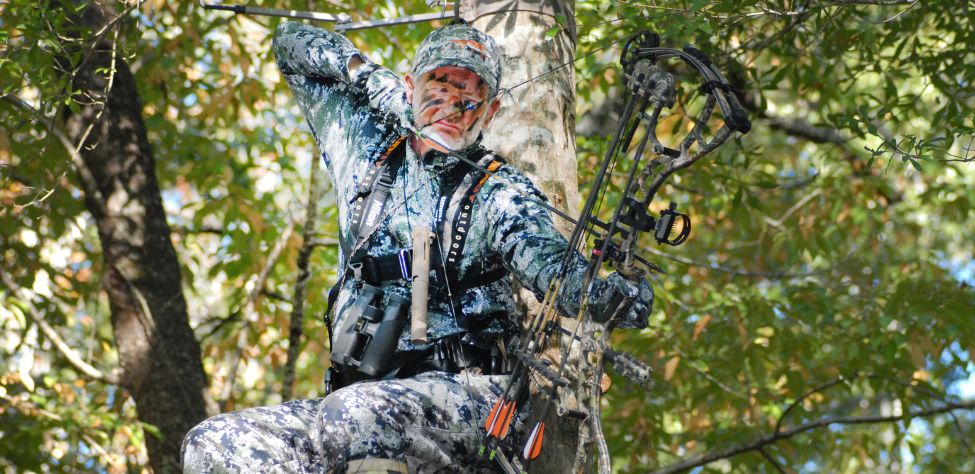
- Call and stalk. You’ve heard the term spot and stalk. My son, Mark, and I have developed what we believe is a better term – call and stalk. You don’t have to see the elk to go to him, but you do have to know where he’s located. Identify where the elk is using a bugle or a cow call. Next, put your call in your pocket and don’t use it anymore. Then, stalk in close enough to get the shot. Through the years, we’ve called in very few big elk. But if you use the call to learn where the bull is positioned, you can rely totally on your stalking skills to get in closer to get a shot. The bull you want to take won’t likely be bugling. He’ll be giving a low, deep growl. The growlers are the trophy bulls.
- Understand the wind to take a big bull. I use odor-eliminator products extensively to keep from spooking elk downwind of me. However, I want the wind in my face when I’m going to a big bull. Remember that: when the sun’s up, you need to get above the elk and hunt down to him because the drafts (thermals) will come up the mountain and carry your scent to the elk; and, if you’re going to an elk before daylight, and the elk are below you, you’ll spook the elk you’re trying to take. Instead, get below the elk and then hunt up to him since the thermals will be coming down the mountain.
- Be disciplined about the basics. Often, if a hunter’s been on several elk hunts, he’ll think he can shortcut the basics. He’ll rely too much on his calling, disregard the wind, won’t be patient, or hunt a big bull elk in some place other than his bedding area. Taking a big bull is the equivalent of scoring a touchdown in the Super Bowl. Regardless of the speed of the runner, the passer’s accuracy, or the play’s creativity, without blocking, tackling, executing the play, and observing all the fundamentals of football, a touchdown will never be scored. The average elk hunter only elk hunts about 5 days per year, so often, he’ll forget the basics. The discipline required to do the basics of elk hunting consistently produces the biggest bulls.
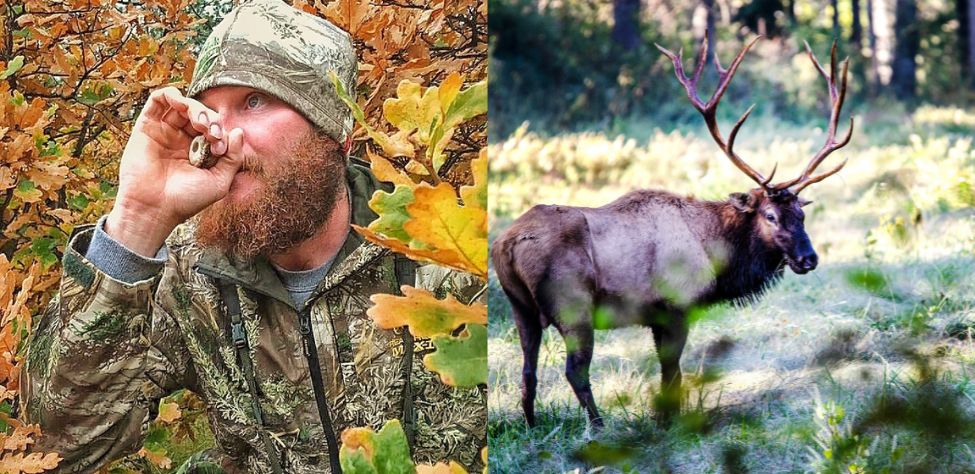
- Hunt big bulls in lousy weather. For the rifle hunter, the longer he can wait to hunt a big bull, the better his odds will be for taking one. Late November or December, whenever the end of elk season falls in the state you choose to hunt, you often can take a big bull elk. Even though the bulls won’t answer bugles then and generally won’t come to cow calls because the cows aren’t in heat at that time of the year, the one thing a cow gives a bull is security. An older-age-class bull depends on his harem of cows to look for danger. I’ve learned that when you hunt under adverse conditions like brutal winds and bitter temperatures, you can use a cow call in a region where a bull wants to be. The cow call will give the bull the confidence to step out of cover into a clear spot where you can take a shot. We’ve harvested bull elk that will have scored 370 B&C or better by using cow calls late in the season to get older-age-class bulls to come out where we can get shots. To find trophy bulls in the late season, search for a spot where the wind blows the snow off a hillside. The grass will be closer to the surface, and the bull won’t have to dig through as much snow to reach it.
- Remember, big bulls don’t look up. You’ll find tree stands much lighter than previously, and today, more hunters are successful at taking trophy-class bulls from tree stands. Since the big bulls won’t look up, if you’re hunting watering holes or wallows, consider the possibility of carrying a tree stand with you. Then, put that tree close to the site where you want to hunt.
I wish I could take all the credit for coming up with these 10 secrets for taking big bulls (See Day 2 also), but honestly, my son helps me remember many of these secrets. He’s an excellent elk hunter. These tactics are the ones we use, and out of all of them, the most important technique is majoring in the basics of hunting elk.
Looking for more content? Check out our YouTube channel and watch “Why I Love to Guide Children” by John E. Phillips.
Expert Guidebooks on Elk Hunting: Best Sellers

Secrets for Hunting Elk
The quickest, easiest (if there is an easy way), and safest way to find and take that bull elk of a lifetime will be to hunt with a guide.
Chad Schearer, a longtime Montana guide and TV personality, told me, “My hunter is my gun. If I get to the elk, and my hunter isn’t with me, then we don’t take the elk. My job is not only to find the elk but also to help the hunter get to the elk and make the experience as enjoyable as I can for him.” That’s the kind of fella with whom I want to go elk hunting.
An elk hunt can be tough, but it doesn’t have to be so tough that you don’t enjoy it. That’s why this elk hunting book starts with the confessions of an elk guide and with Chad Schearer’s philosophy of what the guide and the hunter’s relationship should be.
A good portion of your success will depend on your physical condition, and Matt Morrett of Harrisburg, Pennsylvania explains how an eastern hunter can get ready physically during June and July to hunt western elk, the animals he describes as, “Like deer or turkeys on steroids.”
Wayne Carlton, well-known elk hunter and TV and video personality from Montrose, Colorado, tells us what types of elk calls to use and what to say to the elk. Mike Miller of Colorado, another elk guide and Mossy Oak video personality, has tactics for the best equipment for bowhunting and gun hunting elk.
You’ll learn helpful strategies and hunting tips in this book, as well as some straightforward hunting methods that will help to make your elk hunt more successful.
“Thanks to the advice in your elk hunting books, I was able to call up a nice 6-point (6X6) bull elk! He was bugling like crazy. I called him in from about a ¼ mile away. Called him into bow range (about 40 yards away). It was a thrill!” ~Rob Brannon
VERSIONS: AUDIBLE & KINDLE

Elk: Keys to 25 Hunters’ Success
Often just one tip or tactic makes the difference in whether you take an elk home to dinner or have to hike back to the truck by yourself. In John E. Phillips’ latest elk book, Elk: Keys to 25 Hunters’ Success, you’ll learn from successful elk hunters the strategies they use to find and take elk.
Many know that the technique that seems to work most often is to hunt where other elk hunters don’t and understand where the elk are before you go on a hunt by studying data from each state, visiting HuntData (see chapter 1), examining maps, and reading postings on elk forums.
This book also tells you how to get ready physically for an elk hunt, including participating in Train to Hunt Competitions, what gear you need to take, how to enjoy a successful do-it-yourself elk hunt, or how to pick the best elk guide for you. You’ll also hear about the X System and the Broken Y System of hunting elk.
Although no one person has all the answers on how to help you find and take your elk, I’m convinced that this book’s outdoors men and women will teach you how to have satisfying elk hunts.
As my friend Karl Badger once told me, “Elk hunting doesn’t get any better than when I ride horses into the high backcountry, see two grizzly bears, hear a pack of wolves howl close to camp all night long, eat plenty of delicious food prepared on a fire and enjoy the company of good friends.”
VERSIONS: AUDIBLE, KINDLE & PRINT

How to Find Your Elk and Get Him in Close will teach you the tactics of 10 nationally known elk hunters, to help put that giant bull that’s been screaming at you from afar, in your lap. You’ll learn what some of the best guides, outfitters, and successful elk hunters do to find elk and get them in really close.
Also in this audiobook, you’ll notice that the majority of the experts call elk to within bow range. We selected numerous bowhunters and bowhunting guides, since the bowhunter has to get much closer to a bull than the gun hunter does – often less than 20 or 30 yards – practically in your lap.
On one elk hunt, I’d heard this bull bugle all morning. My guide had called him within 30 yards, and he was standing just inside black timber. I saw the smoke from his nose wafting out into the icy air less than 30-yards away. All the bull had to do was step out, and I could take the shot with my bow. But then, through no fault of my guide or me, the bull vanished.
The only conclusion I could come up with to understand why the bull I wanted to take with my bow hadn’t stepped out and given me a shot, was because he got raptured. He evidently had left the earth with no trace of himself.
This hunt was when I started wanting to learn more about hunting elk up close. In this book, I’ve tried to find some of the most knowledgeable, experienced, and practical elk hunters. I’ve always found that the best way to learn any outdoor skill, is to either hunt or fish with the best sportsmen in that field.
Often, in elk hunting, that means elk guides, who generally hunt every day of the season and receive a salary for every hunter they guide. So, I’ve put together a group of some of the best elk hunters I know to help us all learn how to find bull elk and get them in close.
VERSIONS: AUDIBLE, KINDLE & PRINT
Tomorrow: What Are Do’s and Don’ts for Bugling Elk

